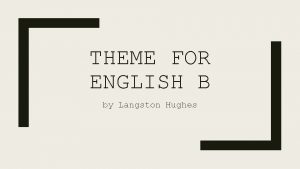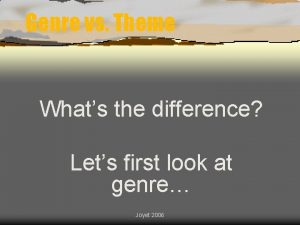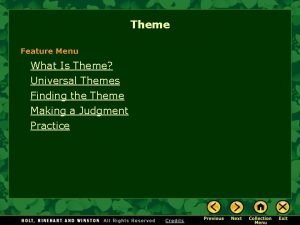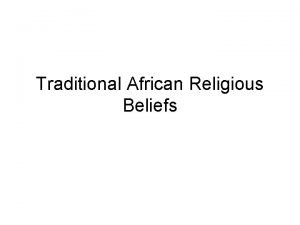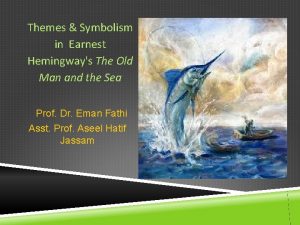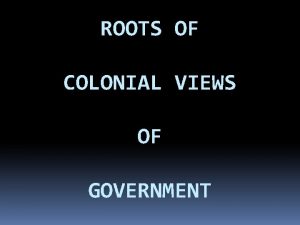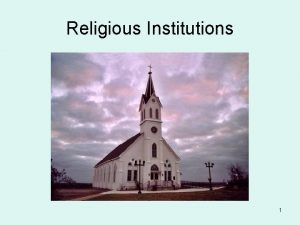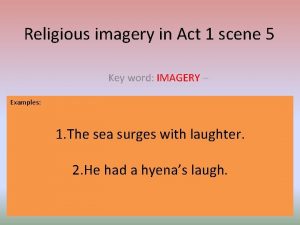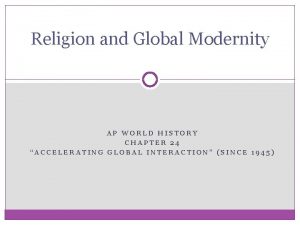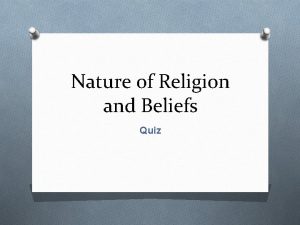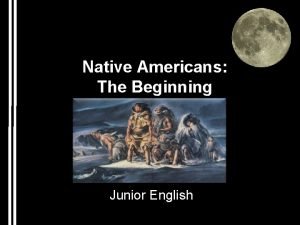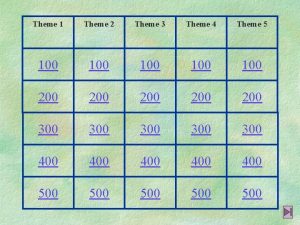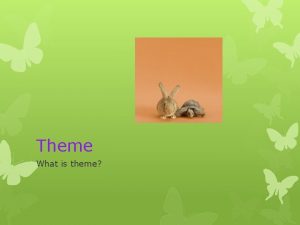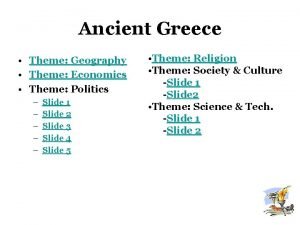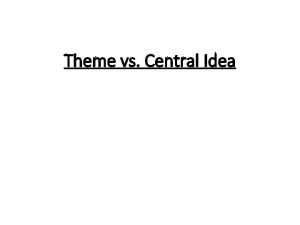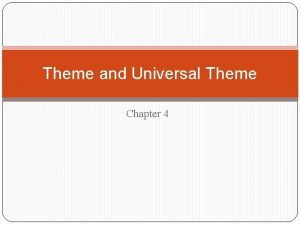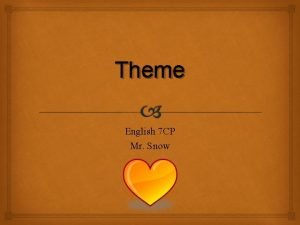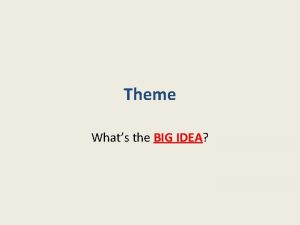Theme 4 Religious Language D Religious Language as














- Slides: 14

Theme 4: Religious Language D: Religious Language as Non-Cognitive and Symbolic

Functions of symbols (Randall) • Meanings of symbols are subject to change. In 20 th Century John Herman Randall undertook studied how communication differed. Randall realised that the world of natural science as natural theology had a common purpose. • Language represents a set of values, identity and culture. Religion is a human activity that demands careful observation. Randall believed that religious symbols were mythical, it was not the same belief as empirical science or realist based discipline. , Randall accepted Realism, Religious symbols in a non-cognitive role, as a form of communication ‘it is important to realise that religious symbols are not signs, function in intellectual and practical life’, they do not provide empirical knowledge. There is a parallel with religious symbols and Platonic ideas (Greek ideas), through symbols could approach the divine. When it came to the belief in God and other such theological prepositions , Randall said to accept anti-realism.

Functions of symbols (Randall) • Religion gave humans valuable insight what it means to be part of the universe, Religious symbols have a primary role in a noncognitive role , to provide a function. There is a distinction signs and symbols. A sign stands for /represents something other than itself, its always a sign. A symbol was not representative, it reveals something. Randall focussed on forms communications within religion that gave greatest insight into commonly held beliefs, ideas and cultural beliefs. Randall realised that the world of natural science as natural theology has a common purpose. Randall believed the central role of religious experience in order what it means to be religious. Religious language is highly symbolic that gives people their identity but does not have factual statements , when it comes to belief in God it is anti-realism.

Functions of symbols (Randall) • Symbols was not representative but it provides a response to those who use it. Cognitive symbols that provide factual symbols about the empirical world, such as scientific equations/theories. • Non-Cognitive provides an emotional response and does NOT provide empirical knowledge. These responses are shared, power of feelings to evoke feelings. Religious symbols have a unique characteristic , they have ability to reveal or disclose something. Through symbols human beings can understand the divine beings, through symbols we can lead a religious meaningful life.

Religious Language as non-cognitive and symbolic: God as that which concerns us ultimately (Paul Tillich) • Tillich in dynamic of faith contributed to the understanding of symbolic language. Tillich saw the need for spiritual concerns: Cognitive, Aesthetic , Social and Political. • ‘ The red sign at the street-corner points to the order to stop the movements of cars have essentially no relation to the other, but conventionally they are united as long as the convention lasts… sometimes such signs and symbols more difficult because it is the fact that signs do not participate in the reality of that to which they point, while symbols do. Therefore signs can be replaced for reasons of expediency or convention, which symbols cannot’.

Religious: Language as non-cognitive and symbolic: God as that which concerns us ultimately (Paul Tillich) 1. 2. 3. 4. Symbols point beyond themselves to something else Symbols participate in the reality of that to which they point Symbols open up levels of reality that are otherwise closed to us. Symbols unlock dimensions and elements of our soul that correspond to the dimensions and elements of reality. 5. Symbols cannot be produced intentionally. They grow out of the individual or collective unconscious and cannot function without being accepted by the unconscious dimension of our being 6. Symbols, like living beings, grow and die. They grow when the situation is ripe for them, and they die when situation changes.

Religious Language as non-cognitive and symbolic God as that which concerns us ultimately (Paul Tillich) • Language of symbols was the language of power, God is the fundamental symbol of ultimate concern. The language of symbols was entirely non-cognitive in that it evoked a response at the deepest emotional level of the believer to the symbol, reality and ultimate concern that was God. Myths and symbols of faith are closely linked, myths participates in human activity , they give rise to human cultural and religious traditions and like symbols were present in every act of faith because the language of faith is a symbol.

AO 1 Mark the AO 1 question below Explain Randall’s view of the function of symbols

Challenges including whether a symbol is adequate or gives the right insights. • Randall/Tillich does much to help us appreciate how symbolic language can be used to convey powerful meanings. • Randall language of symbol is inherently non-cognitive, does not provide empirical knowledge, this conflicts with the logical positivists , not being verifiable and empirical. • Paul Edwards , criticised Tillich’s work on symbol ‘philosophical confusion’ , inability express in literal terms anything meaningful about God, what does it mean?

Challenges including whether a symbol is adequate or gives the right insights. • Symbols have changed over time, does it mean it was change their meaning. The ichthus , a symbol used by Christians to signify a safe place • I (Christ) Ch , (God’s) Th, (Son) U, S (Saviour) • Pre-Christian used as a fertility symbol • Swastika used in East – principle of harmony and peace and then by the Nazi’s. • If meaning changes, the symbol considered to be anything other than meaningless?

A consideration of how these two views (Randall/Tillich) can be used to help understand religious teachings • Religious teachings can vary from clear instructions about the mysteries of the soul, neither claim they have a firm declaration, symbols can gain insight into the world of religion. • ‘The idea of God… could bot be adequate to the true nature of the Divine. God could not really be the animal, or the natural force, or carved image, the imaginative picture…they cannot be taken as literal accounts of the divine. They are imaginative and figurative ways of conceiving the relations of men and their ideals to the nature of things and to its religious dimension’.

A consideration of how these two views (Randall/Tillich) can be used to help understand religious teachings • Randall: Religious symbolic language , in a non-cognitive structure make more intellectual sense for the reflective man, By understanding symbols we are lead to greater understanding of religious beliefs. • Tillich- symbol could point beyond themselves and lead them to their ultimate concern. The symbol illuminates the object, ‘God almighty it uses the human experience of power in order to symbolise the content of its infinite concern, but it does not describe the highest being who can do as it pleases. Faith is not belief in such stories, but it is the acceptance of symbols that express our ultimate concern in terms of divine actions’.

AO 2: Whether symbolic language can be agreed as having adequate meaning as a for of language • What if language is taken literally? • Historically and culturally symbols have passed their relevance. • Can we understand symbolism if it was written/understood thousands of years ago? • It is archaic, it is not objective or cannot be tested. Symbols can be seen differently, Swastika used by Sikh’s and Hindu’s used it for harmony and Nazi’s used it differently. How can symbolism be constant? • Can God be spoken empirically? Is God a human idea? • Symbolism distracts people from the worst in life. • To understand noncognitive is more associated with feelings for example the numinous. Functions symbols are: focal point community, communicate experience , evokes experience , arouses emotions =meaningful • Tillich: unlock the soul, symbols provide meaning.

AO 2: How far the works of Randall and Tillich provide a suitable counter-challenge to logical positivism • Vienna Circle rejects metaphysics, it has nothing meaningful to say about the external world. • Needs a rigid criteria, in order to verify a statement. • Randall/Tillich views cognitive language differently, there is no objective scrutiny with noncognitive language. It carries meaning, communication with a religion. It unifies people and is the role of the religious experience. • Tillich – language participatory, Crucifix- atonement, sacrifice
 Cognitive and non cognitive religious language
Cognitive and non cognitive religious language Theme for english b tone
Theme for english b tone Genre vs topic
Genre vs topic What is the difference between theme and universal theme?
What is the difference between theme and universal theme? Universal theme definition in literature
Universal theme definition in literature East african religion
East african religion Religious symbolism in the old man and the sea
Religious symbolism in the old man and the sea Colonial views on government
Colonial views on government Religious institutions
Religious institutions Good pilgrim you do wrong your hand too much
Good pilgrim you do wrong your hand too much What is religious organisation
What is religious organisation Fundamentalism ap world history
Fundamentalism ap world history Difference between duplo and karagatan
Difference between duplo and karagatan Religion pub quiz questions
Religion pub quiz questions Native american religious beliefs
Native american religious beliefs

